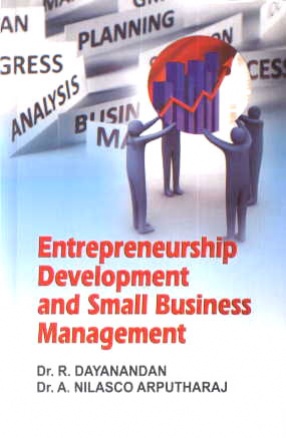Entrepreneurship Development and Small Business Management
One of the great social transformations of the 21-century is now well underway towards developing entrepreneurship in the transitional economies. Its success will require finding ways to combine the entrepreneurial energy of the new private sector with the restructuring needs of the privatized or to be privatized enterprises. Unemployment is one of the most important challenges facing the poor people in our country. Furthermore, every hundreds of thousands of new job seekers (the vast majority of them youth) join the army of unemployed. India is remaining as a country with unutilized and underutilized labour power, which results in brain drain. A variety of competitive economic, and demographic shifts have created a world in which small is beautiful. It is accepted worldwide that the development and growth of small, micro and medium enterprises (SMMEs) can play an important role in turning this situation around. Policies and programmes to support the development of SMMEs are therefore an important part of the democratic Government’s programmes to create a better life.
There is no guarantees that the business will make a profit or even survive. SBA statistics show that 63 percent of new businesses will fail within 6 years. The nine deadly mistakes of entrepreneurship includes incompetent management, lack of experience poor financial control, failure to develop a strategic plan, uncontrolled growth poor location, lack of inventory control, incorrect pricing, and inability to make the entrepreneurial transition. Entrepreneurs should know their businesses in depth, prepare a solid business plan, manage financial resources effectively, understand financial statements, learn to manage people and try to stay healthy.
Entrepreneurship education in a transitional economy needs to be seen as a very broad social effort advancing on many fronts: primary and secondary schools, adult education institutions, universities, and colleges as well as in the vast domain of public education through the electronic and print media. By realizing the high demand, most of the institutions incorporated entrepreneurship development subject in the curriculum. This book provides vital information for teachers, student community and the entrepreneurs: identifying new business ides, recognizing opportunity, developing a vision statement and creating a dynamic business plan. Critical information designed to increase profits, cash management, and sources of financing, accounts receivable management, business advisors, and methods to reduce risk.
This book will have considerable value for those who aspire to have knowledge about entrepreneurship development as well as the ways and means to manage the business in a successful manner.
Get it now and save 10%
BECOME A MEMBER








Bibliographic information
A. Nilasco Arputharaj